Impact Mapping: Our Impact as an agile organisation
We often talk a lot about various initiatives and the resulting technical solutions in detail. But we often do so without keeping in mind the specific business objective and the desired impact we want to achieve. This is where Impact Mapping comes in.

In this Episode:
- What is impact mapping?
- What problems does Impact Mapping address?
- When does it make sense to do Impact Mapping?
- What are the values of Impact Mapping?
- How is an Impact Map structured?
- The extended Impact Map
- Hands-on: Create an Impact Map for your business goal using a real-world example
If you want to go directly to the free practical guide for creating an impact map for a specific business goal, follow the link👇.
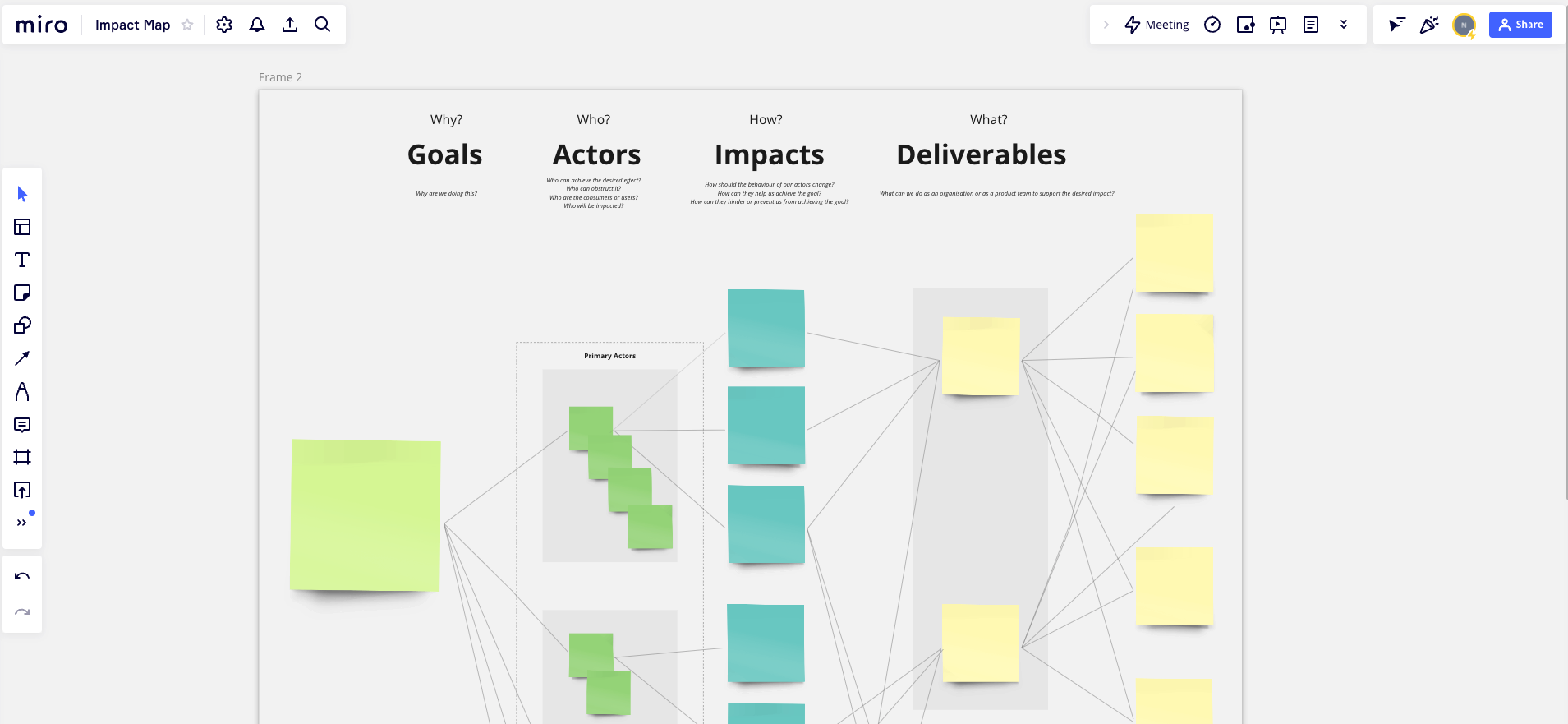
What is Impact Mapping?
Impact Mapping is a lightweight and collaborative high-level strategic planning technique for agile organisations.

Gojko Adzic, the founder of Impact Mapping, gave a great overview of the idea behind Impact Mapping in his presentation.
In addition to introducing impact mapping, I am inspired by the following analogy in this great talk.
A road map or high-level plan should work like navigation software (e.g., Google Maps). First of all, it shows you the way, gives you a forecast how long and how far you have to drive in different variants. For example, if a road is closed, it recalculates the new road (and its alternatives), adjusts its plan and shows it to you. This is how modern plans should be. Continuously adjust the plan to changes according to the goals and show the effects.

What problems does Impact Mapping address?
Often, "traditional up-front" planning methods suggest that the world stands still while the product team implements features, or they refrain from creating a long-term overview, which can lead to a large communication gap between the business sponsor and the underlying teams. This often leads to unnecessary conflict.

An impact map provides the product team with a foundation for effective planning and response to change, while providing a comprehensive big picture for sponsors.
It bridges the communication gap between the corporate sponsor and the product team(s).
When does it make sense to do Impact Mapping?
When there is an initiative, project or problem that involves high uncertainty and/or high complexity, it makes sense to conduct an Impact Mapping workshop.

The impact mapping workshop can have different objectives or contexts. The focus in these workshops are probably different.
- Too many objectives. Impact mapping helps to refocus on the prioritisation of implementation tasks.
- Unclear, disparate, non-common goals. Impact mapping is used to reframe a problem and figure out what is important and not important.
- The solutions are predetermined, but not the goals. Impact Mapping is used to set a vision and achieve high-level alignment.
Gojko Adzic gave a great overview of these different contexts here and tips for the impact mapping workshop.
What are the values of Impact Mapping?
An impact map is a great way to create a shared understanding of high-level, not from a technical perspective, but from a business perspective! It provides a great way for CxOs, Product Managers, Product Owners, Business Analysts, Requirements Engineers, and technical experts to develop a common understanding of the strategic plan with business goals in mind.

In addition to strategic planning, it helps to show the impact of the technical deliverables to be implemented from a business perspective. In other words, it shows what impact the technical deliverables should have. In this way, the impact of the deliverables can be measured directly. It is possible to measure the defined quality of the work results with respect to an overall goal.
It is also an excellent tool to communicate the goals, scope, and roadmap. It helps the delivery organisation maintain a strong purposeful focus, and it is easier to prioritise at a lower (sprint) level.
How is an Impact Map structured?
An impact map contains the following four elements.

Goal - Why?
The goal is the key element. It sets the business perspective and answers the question of why.
- What does the organisation get out of this?
- Why are we doing this?
It supports your business model.
Try to formulate the goal S.M.A.RT.
Actors - Who?
The actors influence the outcome.
- Who can achieve the desired effect?
- Who can obstruct it?
- Who are the consumers or users?
- Who will be impacted?
You can divide group the actors into following groups:
- Primary actors: they get their goals full-filled.
- Secondary actors: they provide supporting services.
- Off-stage actors: they have an interest.
Impacts - How?
◦ Avoid listing software ideas
◦ Avoid implying solutions
◦ Focus on business activities
Source: https://www.impactmapping.org/assets/cheatsheet.pdf
These are the behavioral changes we want to achieve.
- How should the behaviour of our actors change
- How can they help us achieve the goal?
- How can they hinder or prevent us from achieving the goal?
Impacts are described by start or stop something, do something differently, preventing from something.
The impacts contain your key assumptions and place the defined actors in the perspective of the business goal.
Deliverables - What?
Now that the first three elements are defined, we can talk about the desired outcome.
- What can we do as an organisation or as a product team to support the desired impact?
These are deliverables, software features or organisational activities. This is where your epics, user stories, tasks, or product ideas come in. This is not where you should put assumptions.
Deliverables are options, not commitments!
Usually, the deliverables selected after prioritisation are detailed in a next session, e.g., a user story mapping session.
The extended Impact Map
In a blog post on Scrum.org I discovered an extended impact map.

The blog post distinguishes between Customer Outcome and Business Impact, as the following illustration shows:

With this distinction, we get two views: an internal view that focuses on the business objective (Business Impact) and an external view (Customer Outcome) that focuses on the customer side. The extended map shows which customer outcome leads to which business impact, which in turn is linked to the specific business objective.
Step-by-Step guide: Create an Impact Map for your business goal using a real-world example
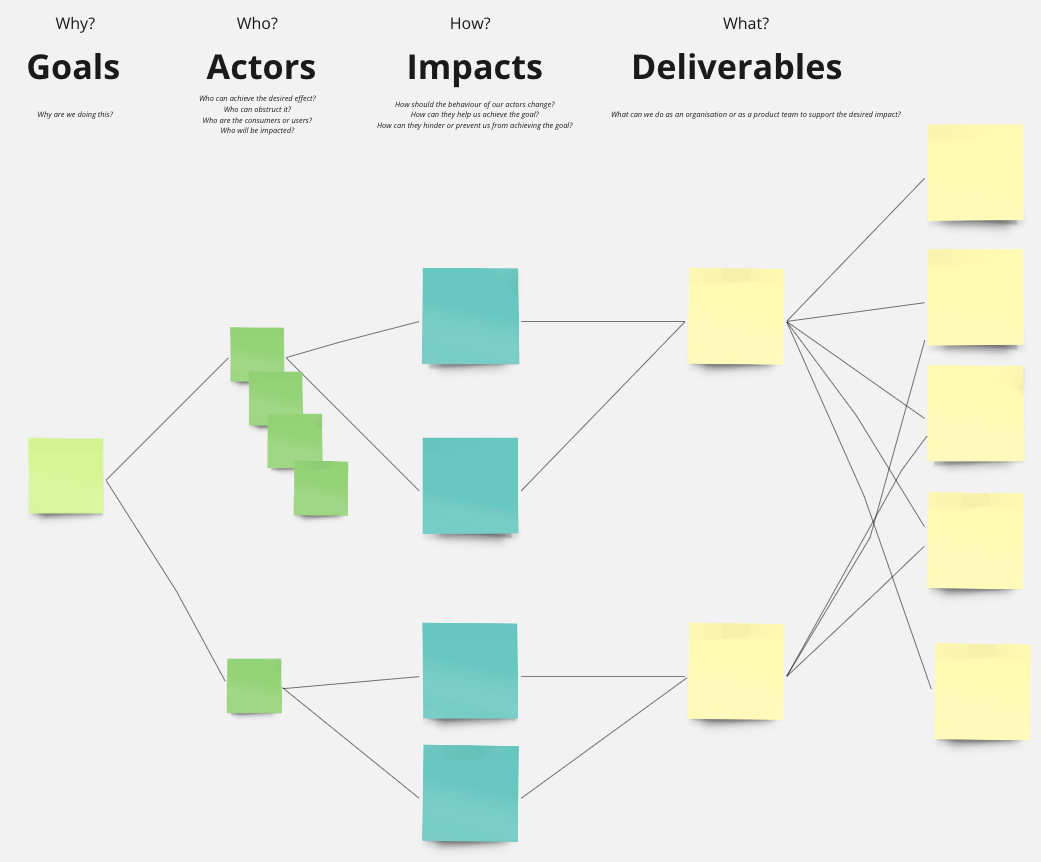

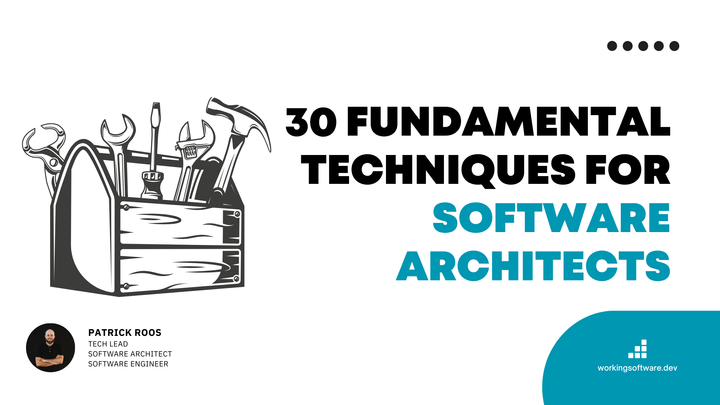
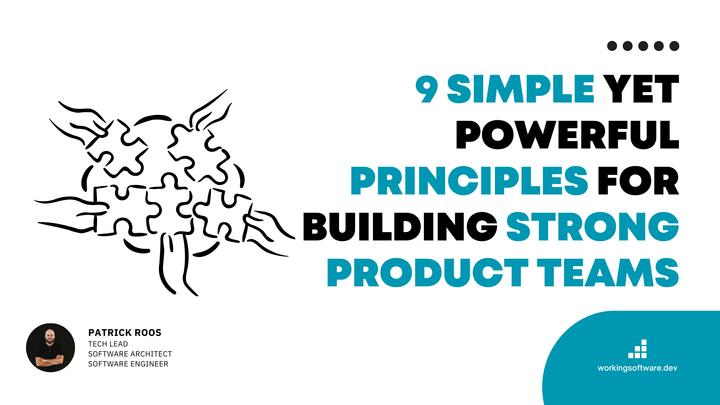
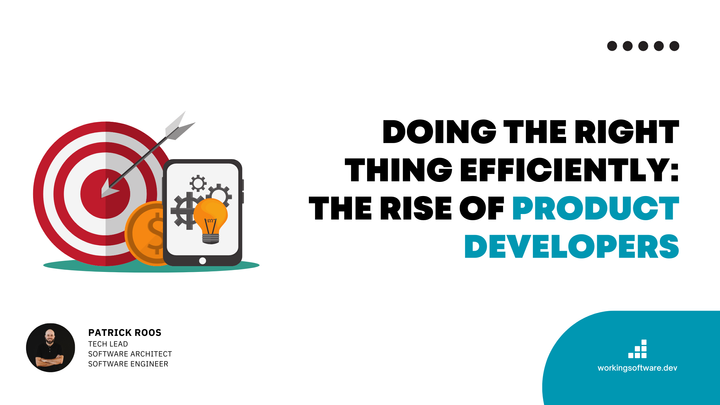
Comments ()